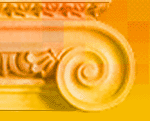|
Assessment
Why are short, formative 'progress checks'
essential to Mastery Learning?
Formative Assessment Assessing for learning
Five Key Strategies for Formative Assessment
Self & Peer Formative Assessment
Value-Added Assessment & The Oak Tree Analogy

Go to 'Arts-Based 'Visualizations' & S.T.A.R. Moments' and review the strategy under 'Focus on Leading Indicators.
Battelle For Kids: Formative Assessment
Summative Assessment
Assessment
of Learning
Neighborhood Nexus - Interactive Data Bank To Explore Positive Deviants - Schools which beat the expectations....
Benchmarking The Best: Who is very good? How do they do it? Results in Shanghai & Hong Kong
National Assessment of Educational Progress
Standardized Testing - Advantages & Problems
High-Stakes Accountability vs Creativity? Around
the world, though, other countries are making creativity development a national priority. In 2008 British secondary-school
curricula—from science to foreign language—was revamped to emphasize idea generation, and pilot programs have
begun using Torrance’s test to assess their progress. The European Union designated 2009 as the European Year of Creativity
and Innovation, holding conferences on the neuroscience of creativity, financing teacher training, and instituting problem-based
learning programs—curricula driven by real-world inquiry—for both children and adults. In China there has been
widespread education reform to extinguish the drill-and-kill teaching style. Instead, Chinese schools are also adopting
a problem-based learning approach.
Plucker recently toured a number of such schools in Shanghai and Beijing.
He was amazed by a boy who, for a class science project, rigged a tracking device for his moped with parts from a cell phone.
When faculty of a major Chinese university asked Plucker to identify trends in American education, he described our focus
on standardized curriculum, rote memorization, and nationalized testing. “After my answer was translated, they just
started laughing out loud,” Plucker says. “They said, ‘You’re racing toward our old model. But we’re
racing toward your model, as fast as we can.’ ”
Overwhelmed by curriculum standards, American teachers
warn there’s no room in the day for a creativity class. Kids are fortunate if they get an art class once or twice
a week. But to scientists, this is a non sequitur, borne out of what University of Georgia’s Mark Runco calls “art
bias.” The age-old belief that the arts have a special claim to creativity is unfounded. When scholars gave creativity
tasks to both engineering majors and music majors, their scores laid down on an identical spectrum, with the same high averages
and standard deviations. Inside their brains, the same thing was happening—ideas were being generated and evaluated
on the fly.
Researchers say creativity should be taken out of the art room and put into homeroom. The argument
that we can’t teach creativity because kids already have too much to learn is a false trade-off. Creativity isn’t
about freedom from concrete facts. Rather, fact-finding and deep research are vital stages in the creative process. Scholars
argue that current curriculum standards can still be met, if taught in a different way.
|

